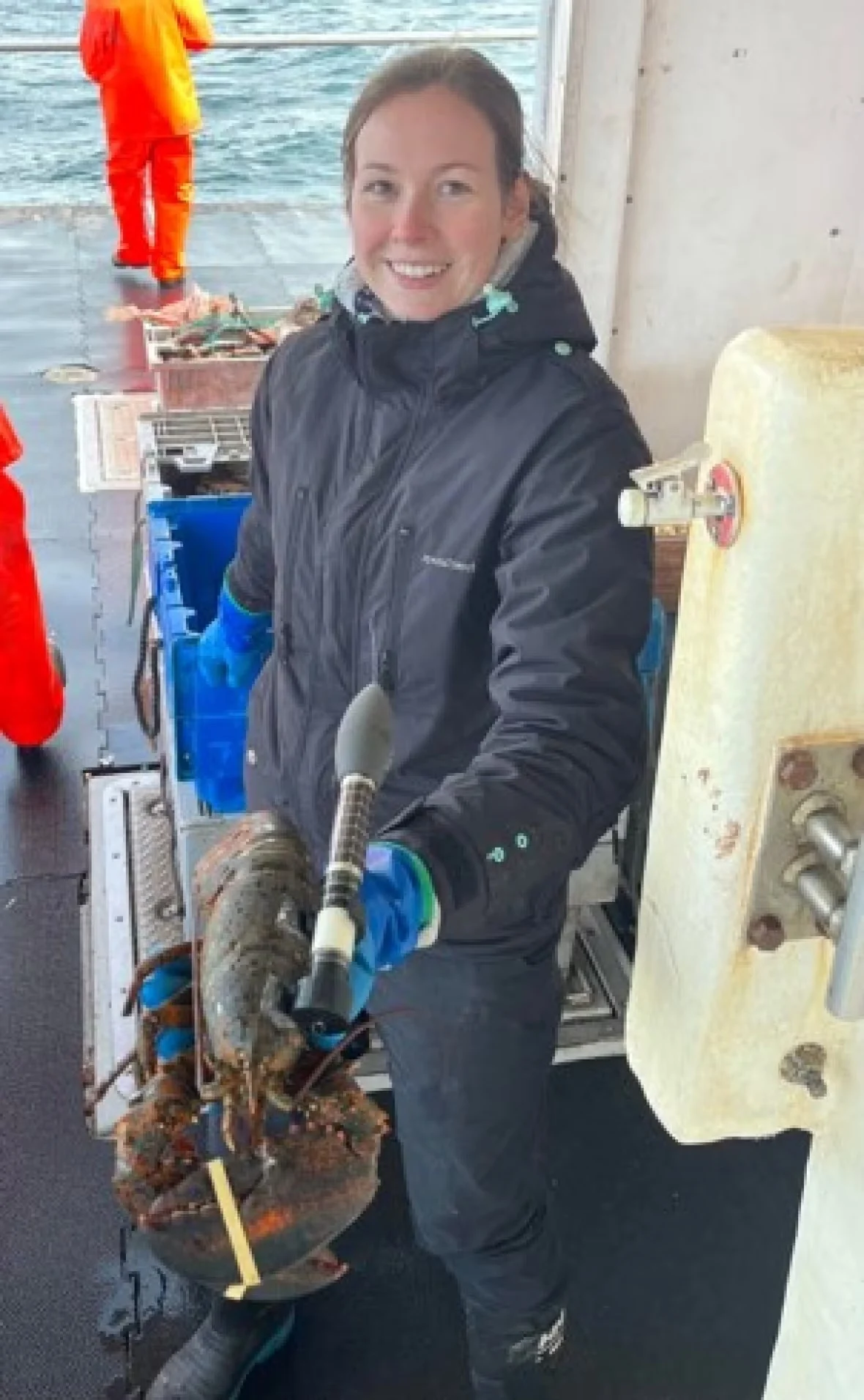Is that a rocket on that lobster? No, it's just a satellite tracker
Some research being conducted out of the University of New Brunswick is garnering interest — and humour — online, as a PhD candidate studies the movement of lobsters in the Bay of Fundy.
Last fall, researcher Emily Blacklock went out with fishers to attach large, black cylinder trackers to 20 lobsters that record their migration.
SEE ALSO: Tagging along on the secret life of the lobster
She wants to understand the path of the crustaceans during the winter months until they moult in late summer — and why they move the way they do.
"We're going to be able to get the first most-detailed data on several aspects of the movement of the adult lobsters in the Bay of Fundy," Blacklock told CBC Radio's Information Morning Nova Scotia.
"The depth and the temperature experienced by the lobsters almost over an annual cycle hasn't been done before."
She said the data collected will also include the estimated location, depth and water temperature of where female lobsters hatch their eggs. That could indicate areas where humans should "watch what we're doing in the water."

Emily Blacklock is a PhD candidate at the University of New Brunswick in Fredericton who is tracking the migration of lobster in the Bay of Fundy. (Submitted by Emily Blacklock)
"So we wouldn't want to put an open-pen aquaculture farm right where they're hatching their eggs."
To collect this data, Blacklock has attached satellite trackers — the shape of which has generated some questions.
She said she's heard it described as a torpedo, a space rocket and some more unmentionable items.
"I do try to educate people to the best of my ability because I know they are strange things to see if you've never seen them before," she said. "I've heard all of the jokes of what it could be."
Trackers will stay on until Aug. 10
The trackers being used are called pop-up satellite archival tags, which are attached to the lobsters using 3D-printed biodegradable plastic brackets that are secured using super glue and epoxy.
Blacklock said there have been some concerns about how the trackers affect the lobsters.
"It's not always something that people expect to see on a lobster. We have done quite a few behaviour tests already and are working on publishing a paper right now about how it would influence their behaviour," she said.
"But these tags are not heavy, they're buoyant, and all the lobsters we use are quite large."
The tags stay on the lobsters for about eight to 10 months before they deploy and float to the surface, which is scheduled for Aug. 10 at 8 a.m. AT.

Blacklock goes out with fishers to release the lobsters with the trackers attached. (Submitted by Emily Blacklock)
Using a solar panel and satellites, the data can then be accessed by Blacklock and her team. Any remaining glue or epoxy will be shed when the lobsters moult in late summer, she said.
Looking to retrieve trackers
Blacklock said some of the tracked lobsters have already been pulled up by fishers, which is likely to happen again, but she has a plan for that.
She wants fishers to call her immediately, so she can talk them through the process of returning them to the waters.
And if the fisher takes a video of them returning it, they will be entered into a $200 draw, she said.
Blacklock said some of the trackers have also come off early, and have washed ashore in Nova Scotia.
She said if any trackers are found, she'd like to retrieve them so they can be reused.
"We do want to get these tags back. They're perfectly safe to handle, so if someone can call me and let me know, I would happily come and meet them and get the tag back from them," she said.
She said her contact information is written on the tracker.
WATCH: Moment of Nova Scotia's tidal bore excites newcomers as it roars in
Thumbnail courtesy of Emily Blacklock via CBC.
The story was written by Cassidy Chisholm and published for CBC News. It contains files from Erin MacInnis.










